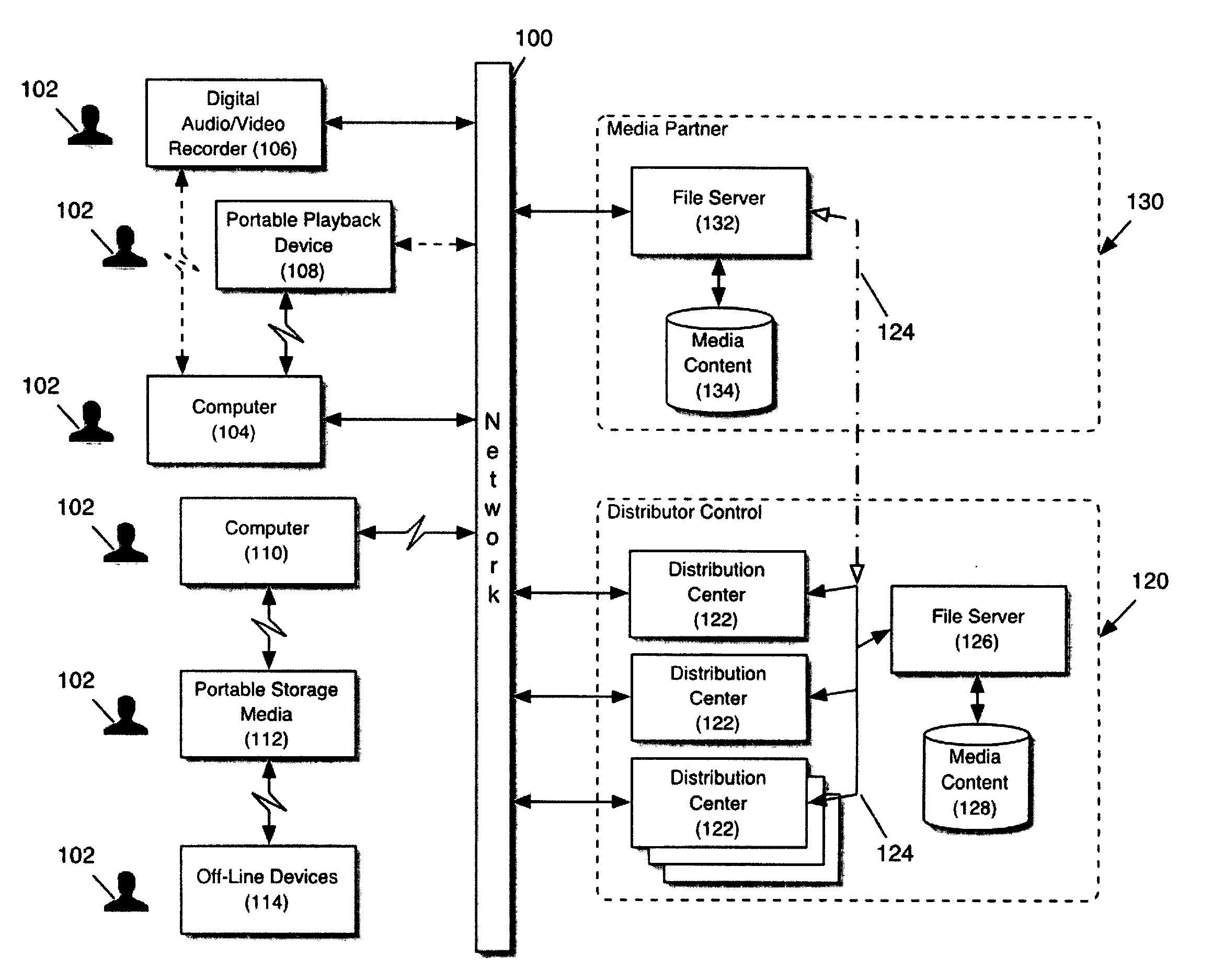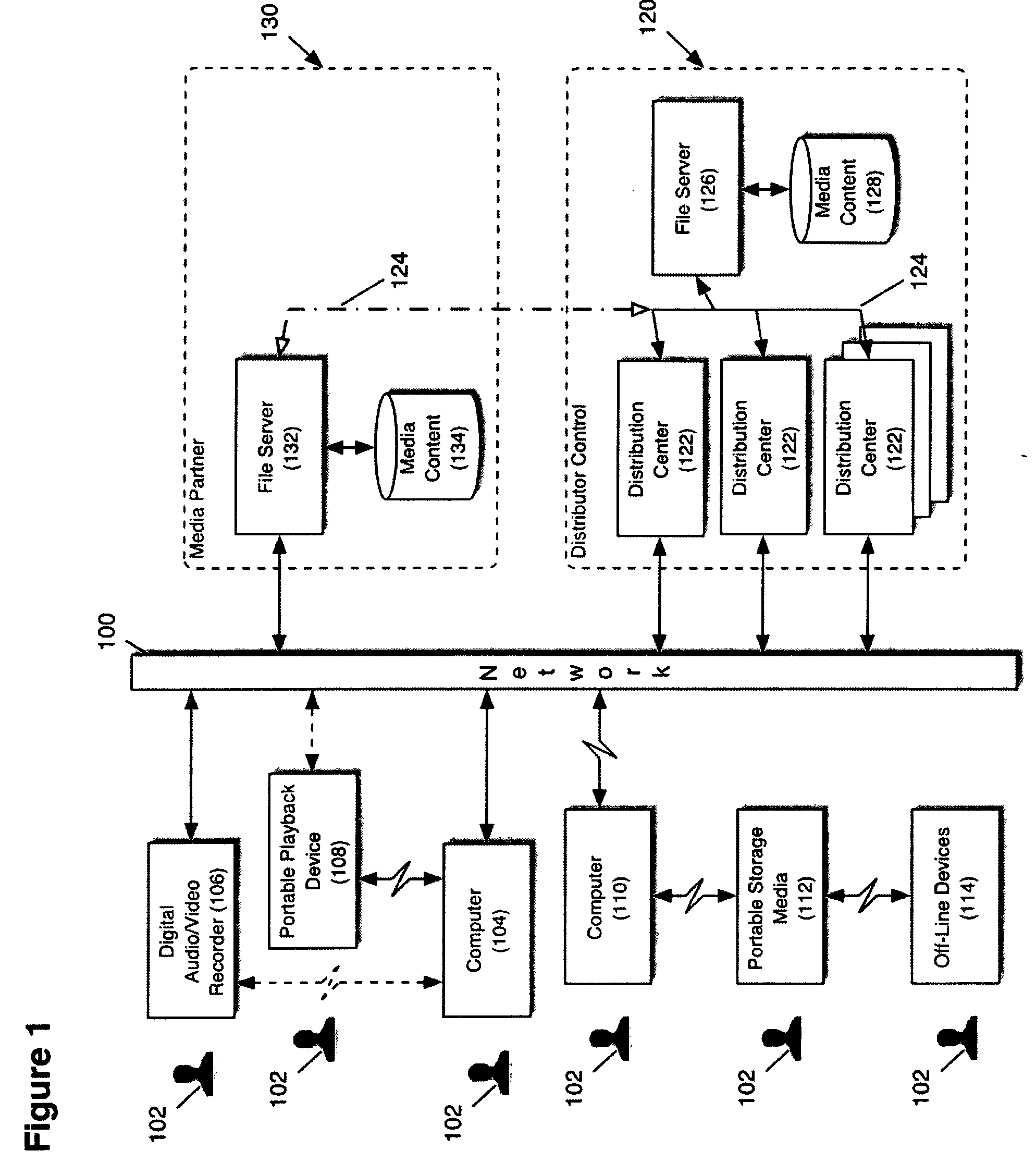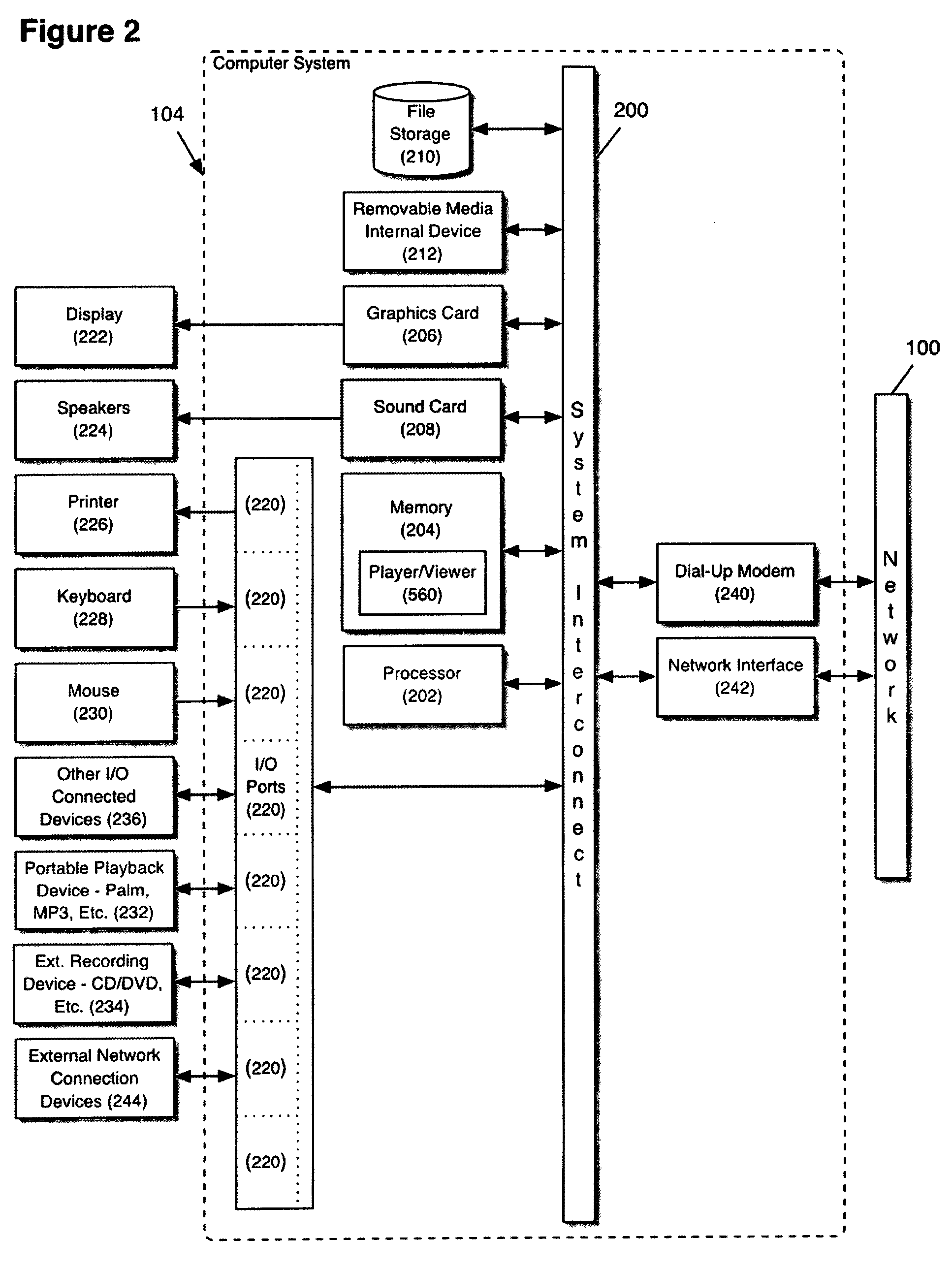Method and apparatus for the free licensing of digital media content
a technology for digital media content and licensing, applied in the field of apparatus and methods for wide digital distribution of media content, can solve the problems of restricting consumer copying and unencumbered use of content, affecting consumer access, and affecting consumer access,
- Summary
- Abstract
- Description
- Claims
- Application Information
AI Technical Summary
Benefits of technology
Problems solved by technology
Method used
Image
Examples
Embodiment Construction
[0211] Referring now to FIGS. 6A and 6B, there is shown in FIG. 6A a more detailed flowchart of the operation of step 514, the ad manager. In FIG. 6B, there is a block diagram that indicates the data stored in memory and exchanged in association with the logic of steps 514 and 516.
[0212] Referring now to FIG. 6A, there is shown a flowchart illustrating in more detail the method by which the ad manager, step 514 (FIG. 5A), operates according to this particular embodiment of the invention. The ad manager begins in step 600 with a media request list 650 already stored in memory. In step 602, it enters a loop to process each item in media request list 650, one at a time. This processing proceeds to step 604, where the ad manager determines an optimum amount of advertising time required by the item, based on information saved earlier in the media request list 650. The resulting ad requirement is an arbitrary function that can depend on, without limitation, one or more of the following: t...
PUM
 Login to View More
Login to View More Abstract
Description
Claims
Application Information
 Login to View More
Login to View More - R&D
- Intellectual Property
- Life Sciences
- Materials
- Tech Scout
- Unparalleled Data Quality
- Higher Quality Content
- 60% Fewer Hallucinations
Browse by: Latest US Patents, China's latest patents, Technical Efficacy Thesaurus, Application Domain, Technology Topic, Popular Technical Reports.
© 2025 PatSnap. All rights reserved.Legal|Privacy policy|Modern Slavery Act Transparency Statement|Sitemap|About US| Contact US: help@patsnap.com



